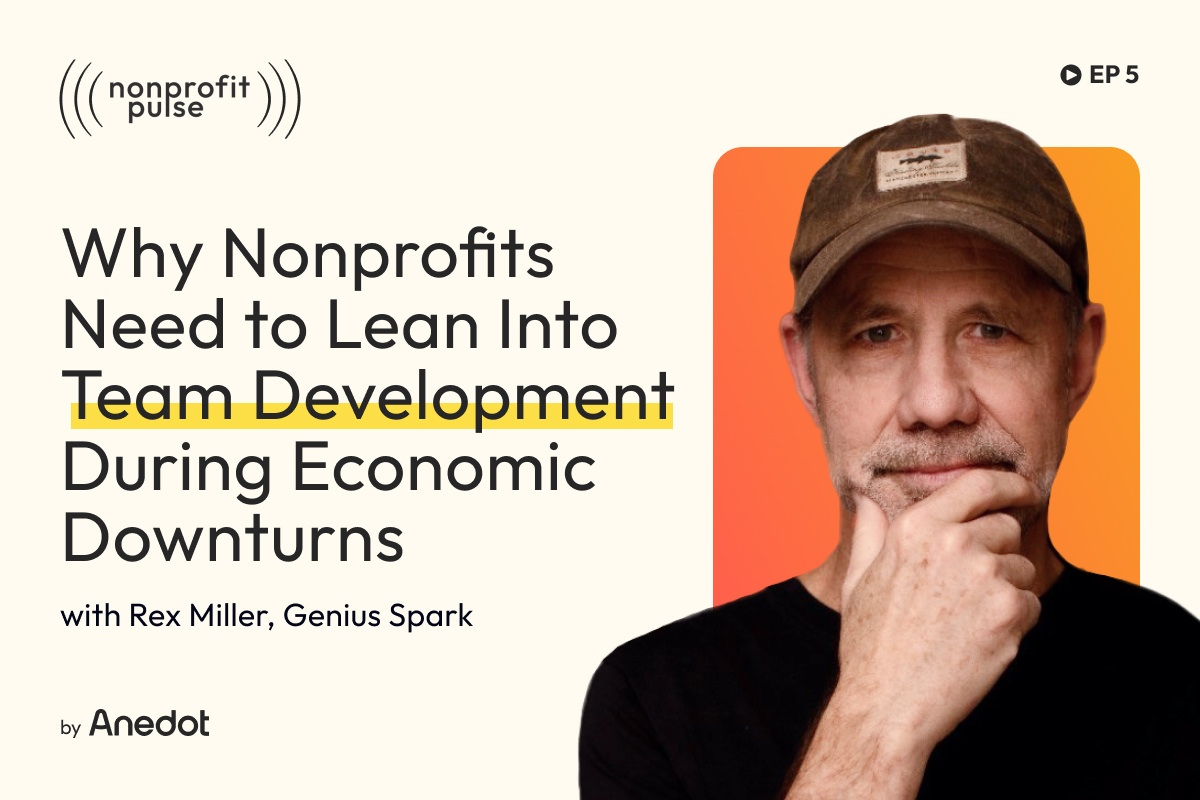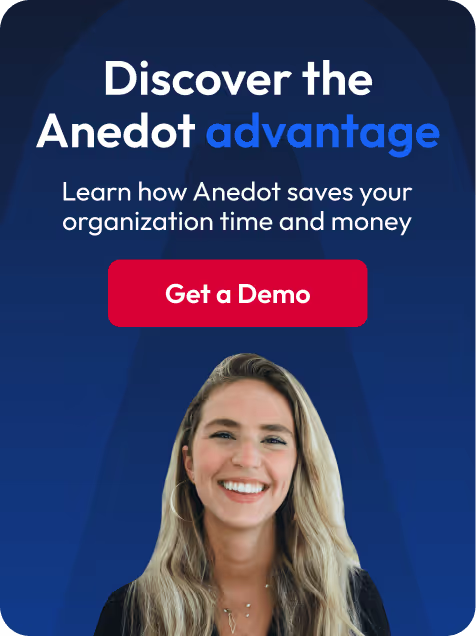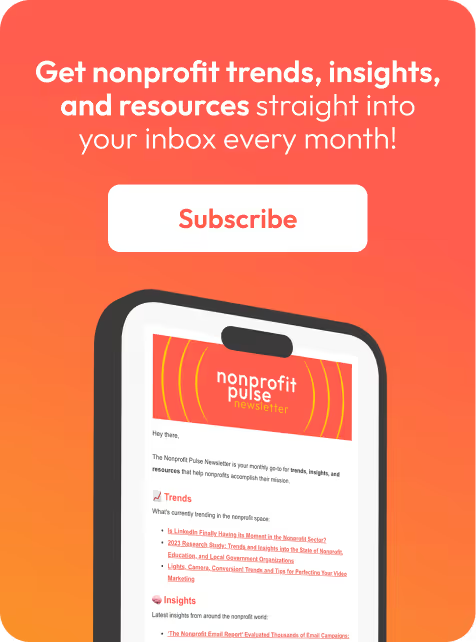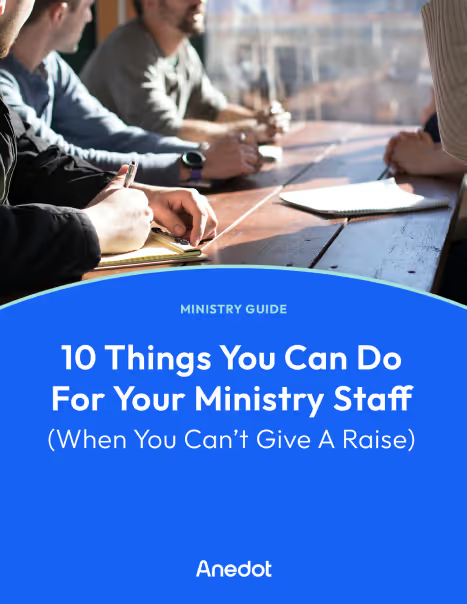Podcast episode transcript ↓
Josh:
Personal and team development is a challenge in even the best economic environments.
When times get tough, it's even more difficult.
However, nonprofits who lean into personal and team development have the opportunity to increase resilience and retain staff.
I'm Josh with Anedot and welcome to Nonprofit Pulse where we explore trends, insights, and resources that help nonprofits accomplish their mission.
On this episode, we're joined by Rex Miller, the topic of personal and team development during economic downturns.
Rex is an award-winning author and consultant with more than 35 years of experience as a corporate manager and executive.
He's a pioneer of organizational strengths training and is the creator of the Genius Spark.
Hey, Rex, it's so good to be with you.
Rex:
Yeah. Thank you, Josh. Great to be here.
Josh:
So Rex is an old friend of Anedot. We've also had him on another podcast of ours, called Big Ideas For Every Org.
But today we're going to be talking about how nonprofits can lean into personal and team development during economic hard times.
You know, it's true across nonprofits and other organizations that when hard times come, certain things, certain focuses, projects, they kind of disappear or become less emphasized.
And so today we're talking about personal and team development and how nonprofits can actually lean into that during economic hard times, whether we're in a recession now or maybe we're heading into one. It depends on which economist you ask.
We know that team and personal development is hugely important for the health of the organization just across the board.
Team development should be emphasized during hard times

Josh:
So, Rex, talk with us a bit about what you've seen, what you've heard about nonprofits and other organizations leaning out of team development during hard times.
Rex:
Well, I think during hard times, organizations drop a lot of things they considered to be peripheral to the business, and they try to focus on just the core and, you know, they don't realize that what makes things work and work smoothly are the personal dynamics that we all have.
It's a team sport. Work is a team sport, organizations are a team sport.
And what happens is when you get into that rut of just checking things off the list out of survival, then the things that really matter, the rapport and the coordination and the alignment begin to fade.
What we start seeing, what I've seen happen is the drama and the conflict starts raising up because people aren't on the same page.
An organization that just went through major layoffs last week. Now, the remnant of the team, it's a design team, the remnant of that team, all senior leaders.
I was called in because their boss is having challenges with them getting along and working well together.
So all that social capital that they thought they had, hard times really exposes how well people actually do work together.
And if you look at the Gallup statistics, and this is even a bigger indicator of the need to continue to develop that.
Before the pandemic, only 30% of the workforce was engaged. In other words, they came giving you discretionary work, you know, things above their job and their requirements.
50% were going through the motions. They would do the minimum, but they would do what you asked them to do.
20%, you were better off paying to stay home.
Now it's 80% are in that: 30% are now the toxic, 50% are still going through the motions. And you've only got 20% that are really those A players.
And that's a human development issue. That's an engagement issue. And now that we've got remote work and hybrid work, you've got all these disengaged people that don't have to be bothered because they can't be seen.
So it's a huge issue.
Managers need to be able to give people clarity, not certainty.
So what happens a lot of times for leaders is they feel they need to be certain, confident, clear, direct. We don't have that.
But if they can be give clear indication, provide consistent, updated information - here's what we know, here's what we're working on, here's what we don't know, here's what we're changing consistently - that can pull people back together again.
How can nonprofit organizations lean into team development during hard times?

Josh:
Yeah. So talk to us about how to lean in. How does an organization get started?
Maybe they see this or they're worried about this. They know there's current challenges that they're facing that they weren't facing a year ago.
And they're worried that, look, we're going to lose our people along the way here.
How can organizations lean into personal and team development during these hard times?
Rex:
You have to make time for it.
You know, if it's just business as usual and everyone shows up and goes right at it.
So part of this part of what you would do is what elementary schools do when kids come to class, there's a social moment, a greeting circle. So part of that is to reduce, you know, kids are coming to school. These are younger elementary kids.
And if you ask any teacher, they come in amped up, you know, all that stress. Well, workers come in with stress.
One way to reduce the stress is have a social connection early and overview of the day.
Here's what we're going to do today, class, and here's why we're doing it and here's how it fits into the rest of where we're going.
Then there's some warm up. They do a little bit of warm up stuff and then they get into the work. No different than an athlete would come in the team.
You wouldn't go straight to the sports facility and just go straight on the playing field. You would transition, stretch, warm up, go through some routines, and then you work.
We have to realize that because of the stressors of the way the workforce is, we've got to look at human performance and do some of these things of managing that recovery and the performance side of the equation.
I'd recommend everybody read the book Deep Work by Cal Newport, where he talks about that we work on these energy rhythms called ultradian rhythms and coming back to redesigning the work flow and the team nature of our sport.
So if I'm a manager and I'm going to have a meeting, what I would do is the first thing is the first 5 minutes heads down, everybody just think, get your head in the game instead of going right into the agenda.
Have a direction where we're going, have the meeting designed, here's what we're trying to accomplish.
Here's the engagement I want from everybody. Expectations. And then at the end of the meeting, not rush in. Oh, we're running out of time. Let's rush.
We need a recap and then we need to close the loop, understand what the expectations are going away, have people recite. Here's what I heard. My role is, here's the commitments we made and then have a 15 minute break before the next meeting.
Microsoft did research on brain scans and showed that brain scans, the beta waves are the stress elements of the brain.
And if you go to back to back meetings, those beta waves increase. But if you have a 10 to 15 minute break, true break in between, they stay at baseline.
And part of the challenge in the way we meet is that there's no time for me to process and lock in what I did.
And it takes you about 10 minutes if you're going to back to back meetings before you can transition, cognitively transition from the old meeting into the new one.
So just learning how to redesign, how we worked better, become more effective, changes the stress level of the day, changes what I take away from the day, changes my clarity.
All of those things are part of what managers need to be aware of in this new environment.
And the pandemic exposed. You know, we were going through the motions before, we were on a treadmill before.
Now we're off the treadmill. Now we're starting to see what wasn't working. I mean, 70% of people didn't want to come in, so something wasn't working.
Now we have this opportunity to redesign. How do we become more effective? And it's a brain science and it's the autonomic nervous system.
It's the human body that we have to understand how it functions in a group environment and under stress.
Josh:
Man, that's so helpful. And, you know, you mentioned the elementary school kid analogy, and I've got three kids in elementary school, and I totally understand that analogy deeply.
And, you know, one of the things about that is each three of my kids are so different. They understand things differently, they learn differently, they communicate differently.
How leaders can use assessments for personal and team development

Josh:
So just thinking about assessments and many, you know, nonprofit leaders who are listening to this, they may be using a particular one or two or even more assessments in their organization.
How do assessments come to play into, you know, developing people and teams during these hard times?
Rex:
Well, for me, and I've been working with a couple for a long time, one is the CliftonStrengths, and we've got the Genius Spark that's part of that.
So I am not wired to be emotionally intelligent. So in the CliftonStrengths, empathy and harmony are my bottom two.
Empathy is the bottom. My family likes to say, Dad wants to care. He just doesn't.
Now the way that plays out in the workplace is that Gallup says that 82% of managers are like me. We're more task get it done oriented. So we missed that human part of the equation.
So what the assessment does is it gives me a decoder key so that I know the differences in people and I know how to connect with them in different ways and allow them to do what they do best, the way they do it best.
And it's transforming. And what we're doing is simplifying.
So if you're on CliftonStrengths or Enneagram or DISC, where the Genius Spark becomes a central translator into simplifying it so that we've even got freshman in high school that have learned how to facilitate with it.
So part of the challenge is how do we simplify these tools so managers don't feel like, oh, I've got to learn this whole new thing and but you need to have an ability to know, understand others, understand what they look like at their best, understand what they look like under pressure, understand yourself and have a way to bridge the difference.
Otherwise, we're going to continue to get this 70 to 80% of people who just aren't plugged in.
Josh:
Yeah, absolutely. And you know, just in summary, you've mentioned just get started.
You know, just make time. Make time for effective meetings. Understand your meetings, understand, you know, what happens between meetings.
Do we give people time to rest? Do we give people time to collect themselves, reflect on what was said in the meeting?
Reflect on even the, as you mentioned, the human component, the relational component of what just happened in that meeting?
And then also assessments, you know, use one, use multiple, but definitely try to understand who your people are at an individual level, not just a collective level.
So what's another great tip, Rex, that nonprofit leaders can use to really lean in on people and team development?
Rex:
Well, every business goes into cycles, just like, you know, I'm on a ranch now, and so we're in the winter time.
So we're doing a lot of work on building our capacity for spring, getting the equipment ready, you know, making sure we've got the right crews and everything available. So a lot of this is getting I mean, your organization is based on humans.
And most of the time when we're running hard, we don't have time to maintain one another to fill each other's buckets.
This is a perfect time to, you know, connect to the stories that people have, to connect to what motivates them at work, to realign, to uncover hidden gifts that people have that you typically overlook because you're just trying to get things done.
So it's a great time to sharpen up the tools, build the relationships and get ready for when the cycle comes back, and we're busier than we've ever been.
How can leaders communicate their desire to lean into personal and team development?

Josh:
How should leaders in nonprofits communicate this, you know, dedication or their desire to lean into development?
When you know, as you've mentioned in hard times, employees often check out, you know, employees who were once engaged and were, you know, cheerleaders for the organization in the mission, maybe leaning out themselves. Right?
They may be frustrated, burnt out, feeling the pressures, whether that's from layoffs, whether that's from revenue declining.
You know, what do you say to those who need to communicate to these people?
How do they communicate, how do those leaders communicate? And what what's some best practices there?
Rex:
First thing is self-care.
I mean, if you don't show up in a good place, you're going to send that signal out.
Whether you trying to put a stiff upper lip on or not. So if you're uncertain, that doesn't mean you need to know what's going on.
But if you have confidence in the mission you're going. If you have confidence that there's a sovereign that knows all that we're going through, walking the talk and in times where it's challenging and we've all been through it, how you show up, that's the most important thing.
If you're not taking care of yourself, if you're stressed out because you're trying to scramble and not sure how you're going to meet payroll and all of that, it's going to trickle through.
It's going to go through the whole herd.
So, you know, in those nature movies where you see the wildebeest all of a sudden starting to shake and all the wildebeests now are on alert because there's a lion out in the bushes, the herd, it ripples through.
There's this social contagion that goes in the companies if the leader isn't on their A-game, and the only way you can be on your A-game is you need a circle of people, a community that you're part of that supports you, a person who can speak truth into your life.
You need be physically at your best, getting good sleep and get rid of the unhealthy coping behaviors that you may have because of the stress.
You just need to be. If you're not on your A-game, the company is not going to be on that same game.
And the only way you can do that is you got to take care of yourself.
What does it look like for CEOs and executive leaders to implement personal and team development within their leadership teams?

Josh:
So what does it look like for CEOs and executive leaders to implement that within their leadership teams? Right? Their direct reports.
You know, it sounds really good, but when it gets down to the practical side, what does that look like?
So how can CEOs and executives allow their leaders to properly practice self-care, to properly take days off to develop themselves?
You know, we're talking about personal and team development today. What does it look like for executive leaders to do that?
Rex:
Well, first they got to be doing it.
And so there's a lot of leaders who expect. So one story.
One metric we were going to work on is having the leadership team improve their sleep. When we did a survey, the average, they were working 60 hours a week on average, working on weekends and then and then getting less than 6 hours of sleep.
And if you're getting less than 6 hours of sleep, now, if you're in bed for 6 hours, that means you're probably getting about four and a half hours of real sleep because of the sleep efficiency.
Anything under 6 hours of sleep, you're legally drunk in terms of how your brain functions. So they trumpeted the message.
They wanted people to take their time off and their benefits, and nobody was doing that.
So it went back to what are you doing on the weekends? And we did the inventory in the leaders and they weren't walking the talk.
So no one's going to do what you say. They're going to do what you model.
And then the company shut off its email at 5:00 pm on Fridays and then opened it up on Monday morning.
And they had this thing that if you text or emailed somebody, their job, they created this icon called a foul. So they just throw the flag down that you violated our standard. And that was protocol.
It took time, but you have to make structural changes.
You have to walk the talk and then you have to continue to come back and reinforce and model and tell the stories, highlight the people who are modeling what you want and continue to monitor, because these are ingrained habits that are amplified under stress.
And you've got to have an all out assault on changing them.
Nonprofit organizations need to prioritize personal and team development

Josh:
What I love talking about with you Rex is just about leadership and how you've helped teams.
You've helped so many diverse teams, from big tech, to startups, to churches large and small, to nonprofits large and small.
You know what's really at stake here for these nonprofits who either are not aware or have any type of practice in place for team development, or those who are are leaning out right now?
What's really at stake?
Rex:
Well, so business has a way of weeding out those who don't change. It just does.
And what the pandemic has shown is a lot of our cultures and our business models aren't really designed to survive the turbulence, the uncertainty and the disruption going forward.
So it's a wakeup call, I think, for a lot of people. And, you know, there's going to be organizations that through burnout, attrition, or their business models, just can't adapt.
They're just not going to be here in the next couple of years.
For those who can adapt, it's kind of a blue sky opportunity because there are so many people who need what these nonprofits provide.
And I think we're at that stage of old wineskins and we've got new wine of a new era, and we're trying to put that new wine in the old things.
And we're finding it's just not holding. So there's a lot of, nobody really has the answers of what the new wine skin is or looks like. We're in this journey. You might call it even this wilderness discovery.
There's a whole model of leadership on this wilderness or discovery model called adaptive leadership. Tod Bolsinger is probably the leading voice to nonprofits and Christian organizations on that.
And yes, it's a new leadership. We don't have the answers. We have to go on a journey to discover together.
Our job as leaders is to build that cohort of committed individuals who are willing to go into unknown territory and discover and learn as we go, as opposed to having the answers ahead of time.
Closing thoughts

Josh:
So talk to us about Genius Spark. You mentioned it earlier, but just for our listeners who are not familiar, it's something we've we've explored here at Anedot.
I've heard others using it as well. Talk to us about that and how nonprofits might be able to use that.
Rex:
Well, the Genius Spark. What we've done is we made a software and a process so that it's affordable to anybody.
So it drops the cost from the traditional places you go for training and consulting about 80%.
It's a very intuitive software, and we focus on using like, for example, the CliftonStrengths to filter out all the content noise and get it down to a paragraph, simple paragraph that, you build on what you look like at your best.
How you get in your way. And then it's a simple facilitating process of reinforcing who you want to be, reflecting on how you showed up. And then feedback.
We have a whole process of getting feedback from peers and colleagues and people who work for you and all of that, very organic, so that we can begin to shift ourselves and our organizations incrementally over time, instead of spending a lot of time in workshops and learning content that doesn't translate into behavior change.
And yes, you guys were one of the early ones in the process, and we've gone from the manual approach to it to a fully functioning software and in process.
So we're excited about it and we think it's going to be a game changer because of the cost in the simplicity of its use.
Josh:
Yeah, I would definitely recommend it.
It's a super helpful tool. And like you said, Rex, it goes further. Or clarifies, maybe it's a better way to say it.
Some of the Clifton StrengthsFinder's results and themes for individuals and teams.
And I think that's the big point here for me is, you know, this is a time of uncertainty of hard times when I think individuals are going to have to lean in to personal development.
They're going have to find tools and and set boundaries and set new habits so they can be the leader they need to be, but also for teams to be coming together collectively, understanding each other more because we understand ourselves more and figuring out, you know, what is making our team truly a team? Meaning something that is greater than the sum of its parts.
And I think nonprofits who do that, nonprofits who lean in right now and come out of this tunnel as a true team, as a group of people who are better than the sum of their parts.
They're going to accomplish their mission. They're going to go further, they're going to grow, and they're going to help those around them even more.
Rex:
I think that's spot on. And the alternative is if they don't function as a team and as individuals, it won't be the sum of the parts because they will be working counter purposes to one another and they won't be aligned.
So it's kind of a double negative in terms of a group that works as a team is greater than the sum of the parts.
But that doesn't mean having the sum of the parts working. They won't be working together and aligned, so you won't get even the sum of the parts.
Josh:
Rex, just in closing, you know, let's imagine we're sitting in front of 200 nonprofit leaders and you have the opportunity right now at the beginning of 2023 to say one thing, one, you know, word of encouragement for them.
What would you tell them?
Rex:
Well, the encouragement is your people are the greatest asset you have.
However, they've gone through and they're still recovering from two years of disruption, trauma, loss.
And what we're trying to do is we're trying to push people that still have broken legs into the race in the marathon.
My encouragement is let people heal, be there to give them space. And if you do, you'll have a reward of loyalty, commitment.
But if we try to push people who just really aren't ready to move out and run the race, then we're going to have people that just fall out of the race.
Josh:
That's so good. Rex, it's always a joy to speak with you. I always learn more things and always encouraged too, as a leader myself.
So it's a joy to be with you. Maybe we can do this again soon.
Rex:
Great. Appreciate it. Take care.
Josh:
Hey, thanks for checking out this episode!
If you enjoyed it, please share it with others or leave us a rating and review.
To find show notes and resources mentioned in this episode, visit Nonprofitpulse.com.
There, you can also sign up for the Nonprofit Pulse monthly newsletter where we send the latest trends, insights, and resources to help nonprofits accomplish their mission.
We'll see you next time.
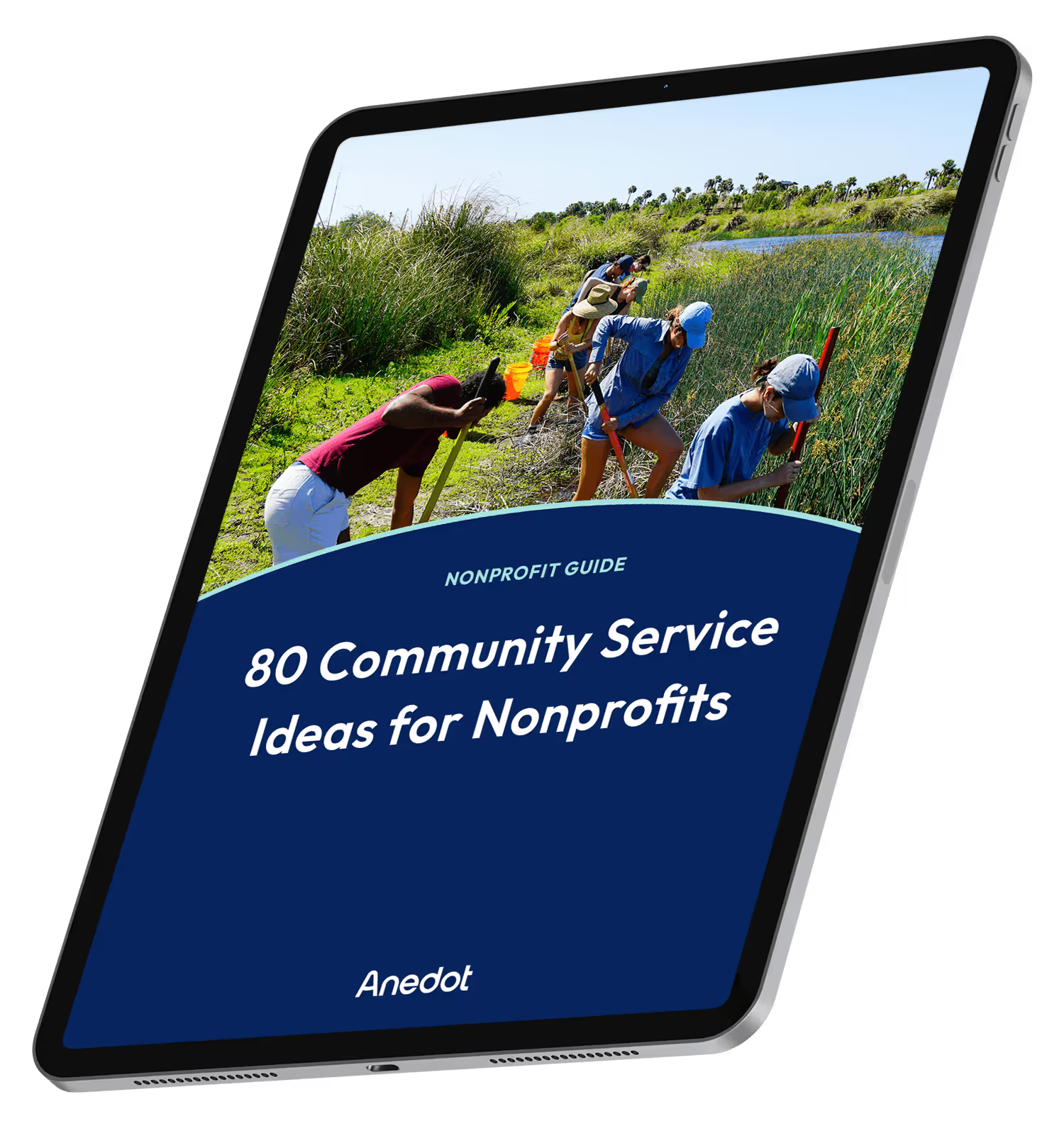
80 Community Service Ideas for Nonprofits
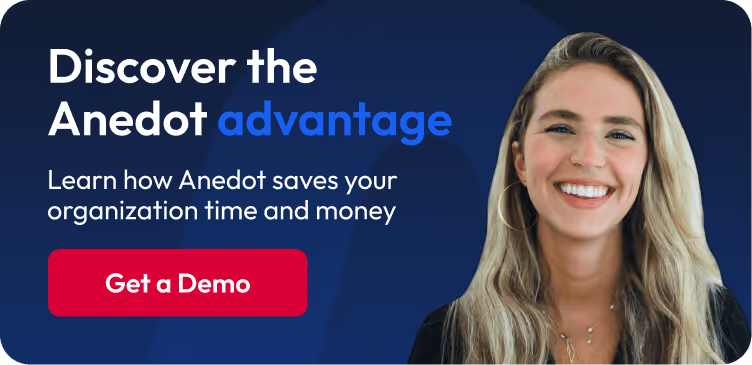
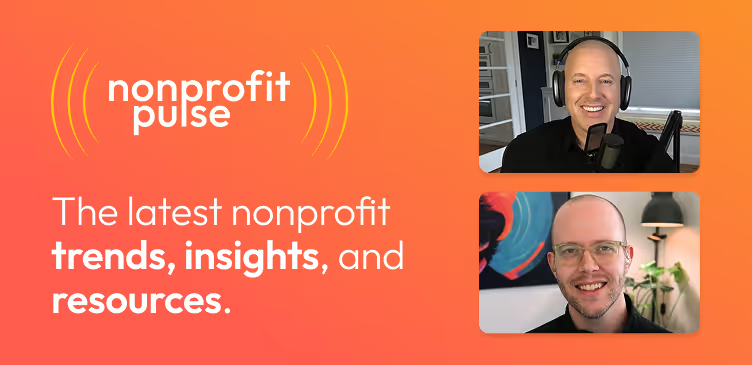
Show notes:
- Nonprofit Pulse
- Genius Spark
- Deep Work by Cal Newport
- CliftonStrengths
- Enneagram
- DISC



